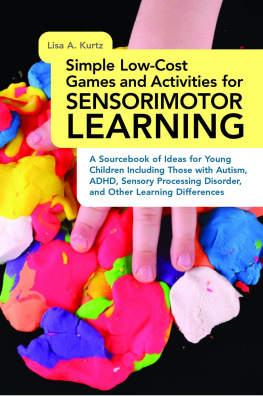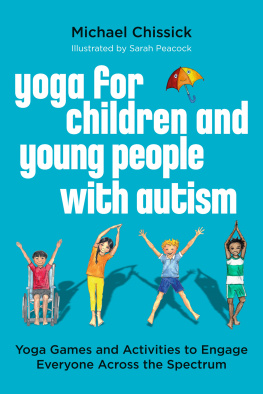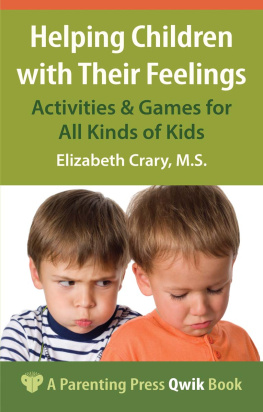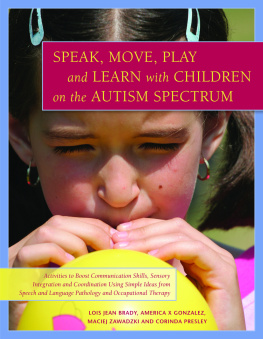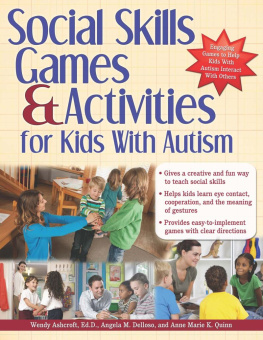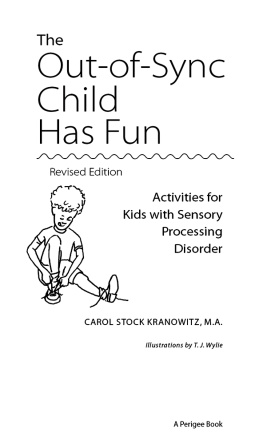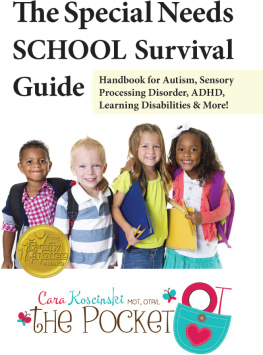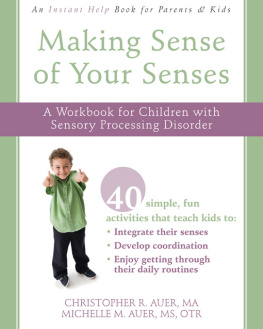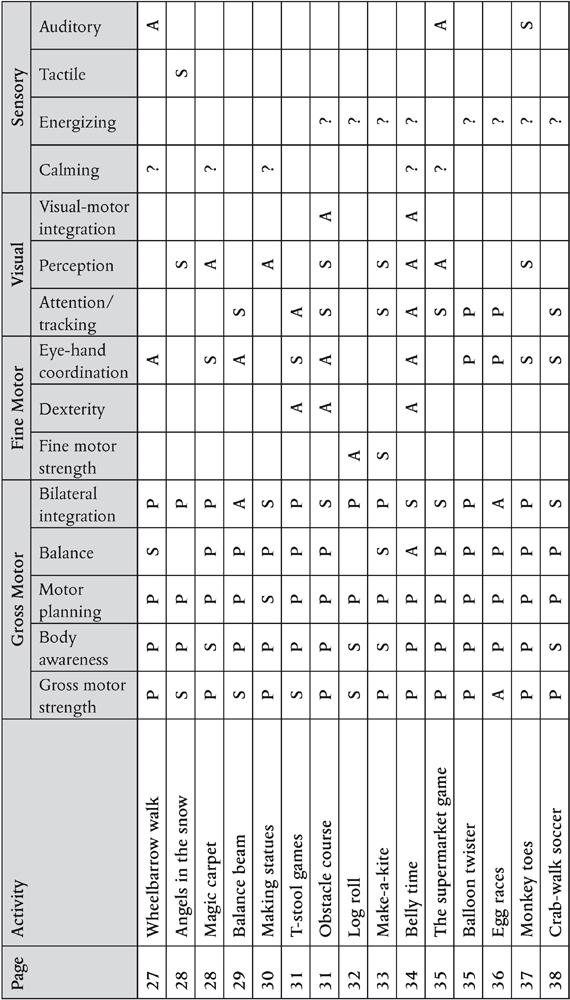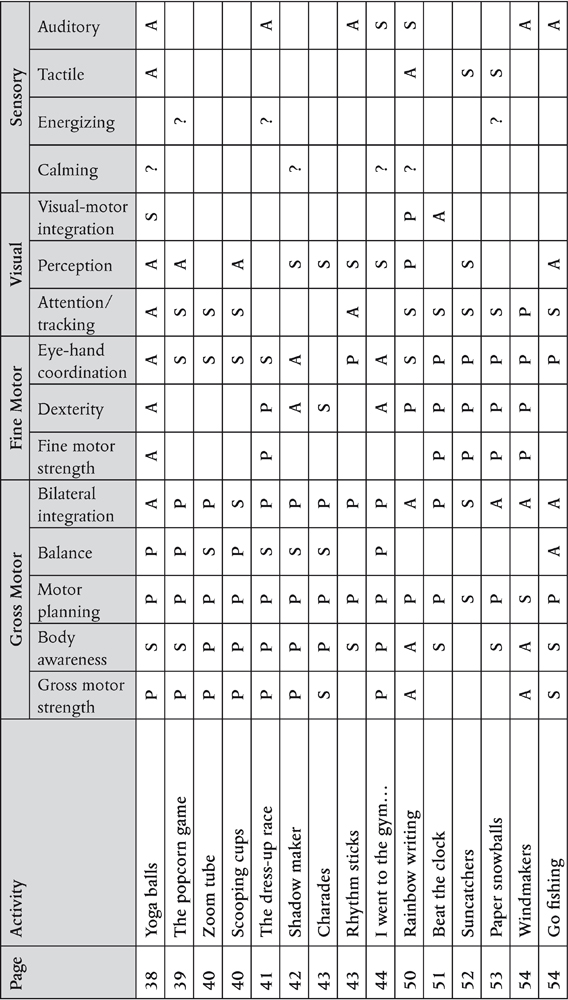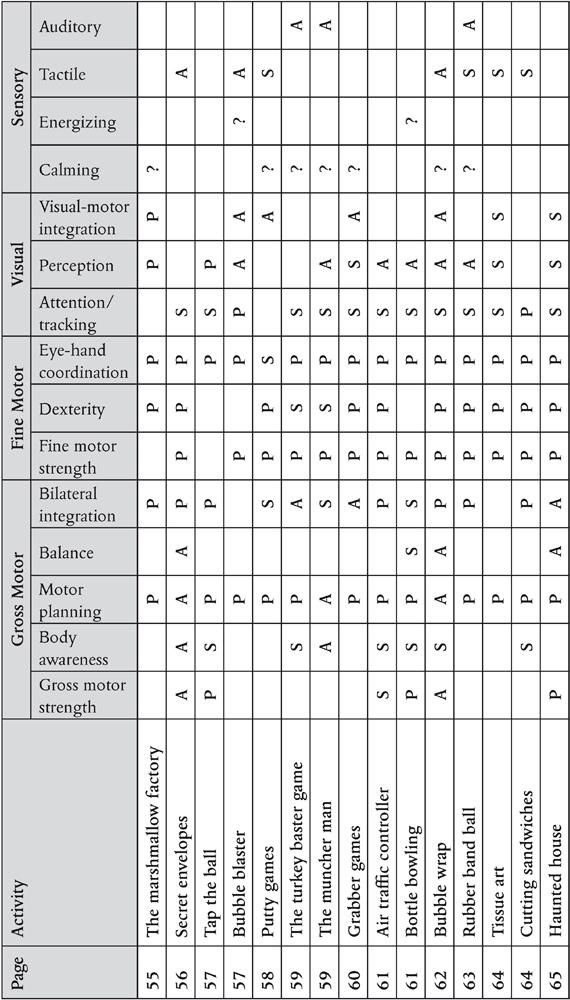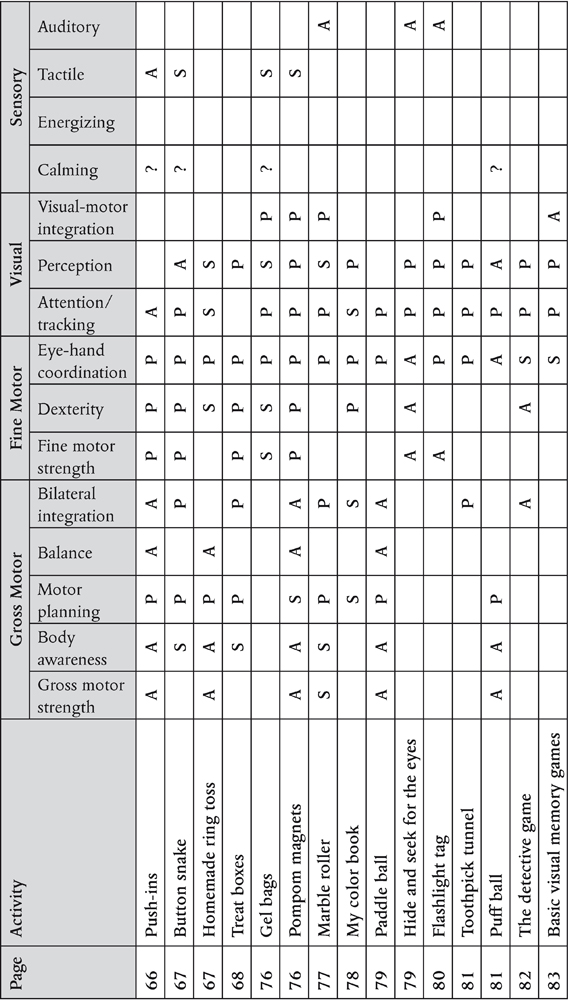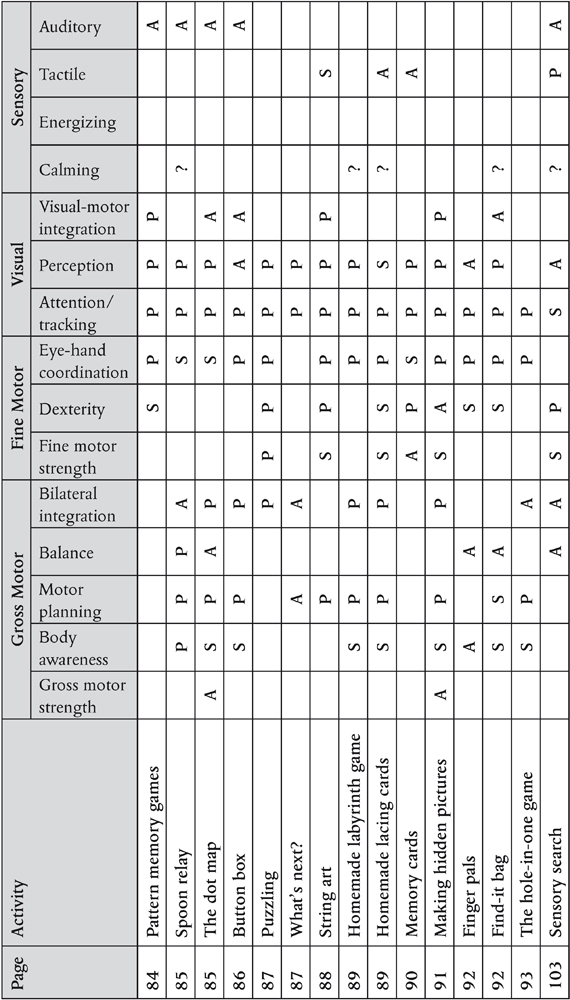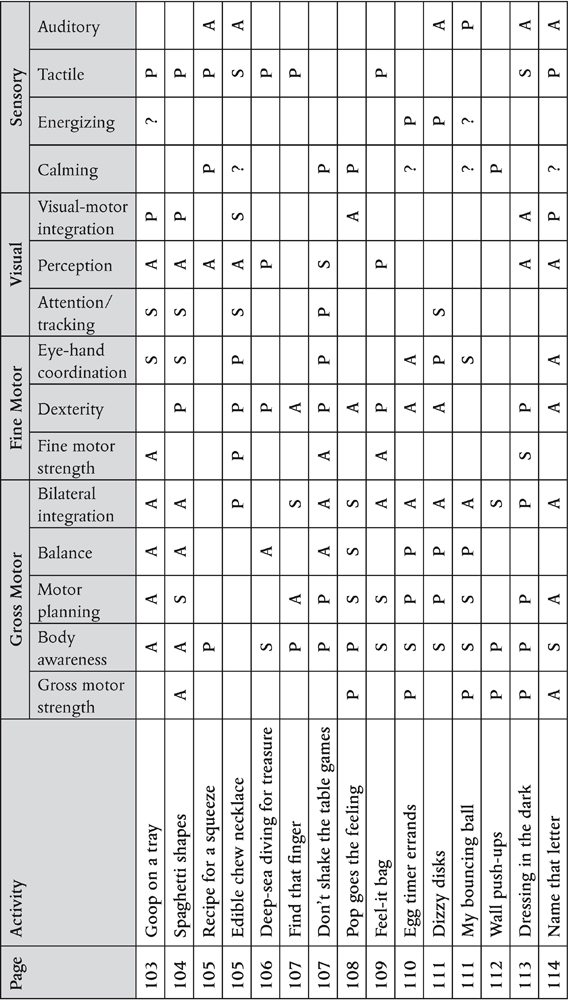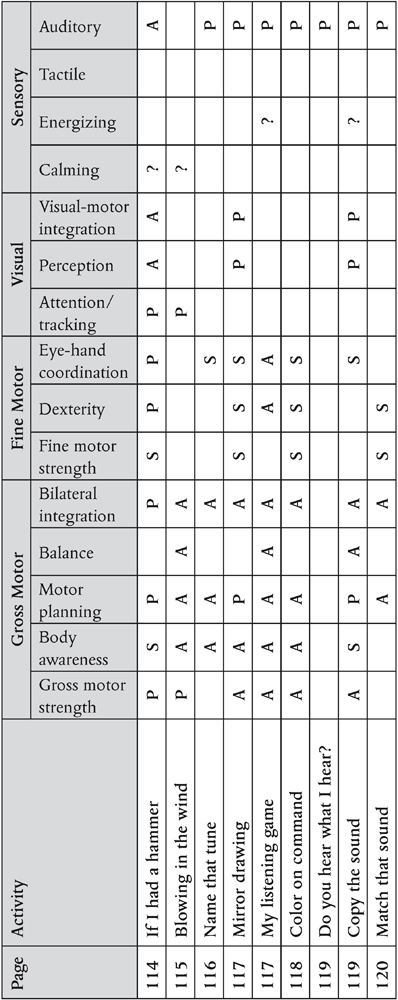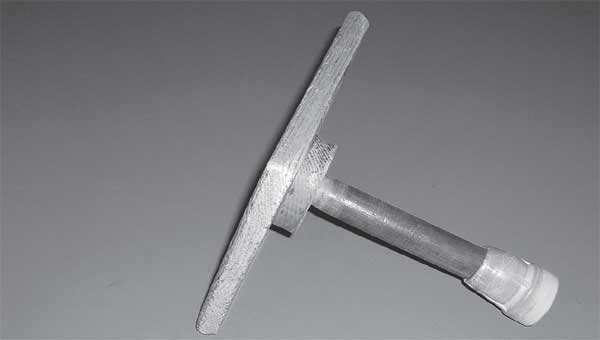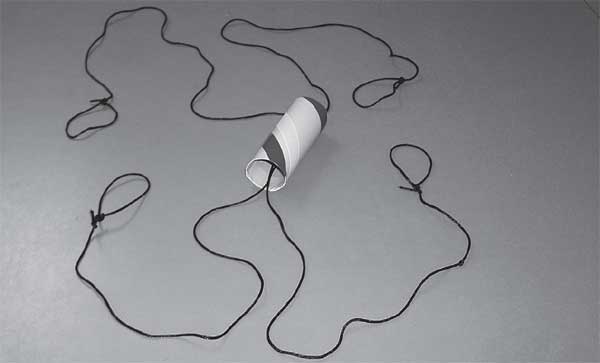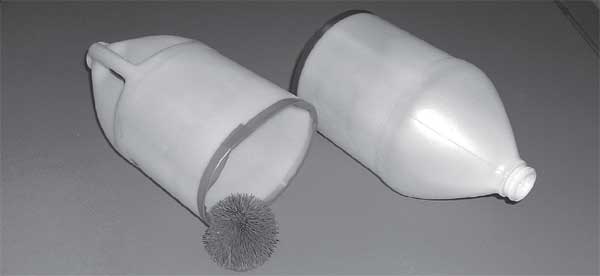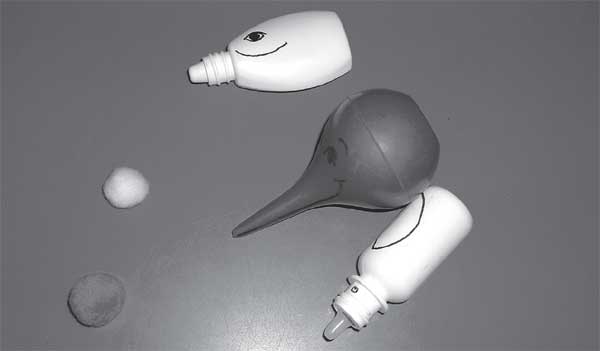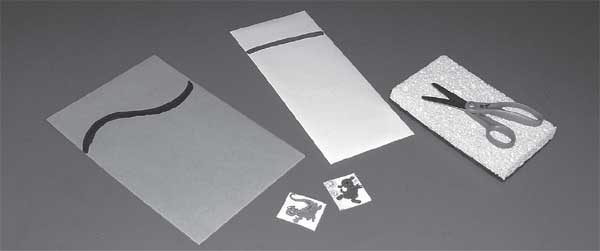Elizabeth A Kurtz - Simple Low-Cost Games and Activities for Sensorimotor Learning: A Sourcebook of Ideas for Young Children Including Those with Autism, ADHD, Sensory Processing Disorder, and Other Learning Differences
Here you can read online Elizabeth A Kurtz - Simple Low-Cost Games and Activities for Sensorimotor Learning: A Sourcebook of Ideas for Young Children Including Those with Autism, ADHD, Sensory Processing Disorder, and Other Learning Differences full text of the book (entire story) in english for free. Download pdf and epub, get meaning, cover and reviews about this ebook. year: 2014, publisher: Jessica Kingsley Publishers, genre: Children. Description of the work, (preface) as well as reviews are available. Best literature library LitArk.com created for fans of good reading and offers a wide selection of genres:
Romance novel
Science fiction
Adventure
Detective
Science
History
Home and family
Prose
Art
Politics
Computer
Non-fiction
Religion
Business
Children
Humor
Choose a favorite category and find really read worthwhile books. Enjoy immersion in the world of imagination, feel the emotions of the characters or learn something new for yourself, make an fascinating discovery.
- Book:Simple Low-Cost Games and Activities for Sensorimotor Learning: A Sourcebook of Ideas for Young Children Including Those with Autism, ADHD, Sensory Processing Disorder, and Other Learning Differences
- Author:
- Publisher:Jessica Kingsley Publishers
- Genre:
- Year:2014
- Rating:3 / 5
- Favourites:Add to favourites
- Your mark:
Simple Low-Cost Games and Activities for Sensorimotor Learning: A Sourcebook of Ideas for Young Children Including Those with Autism, ADHD, Sensory Processing Disorder, and Other Learning Differences: summary, description and annotation
We offer to read an annotation, description, summary or preface (depends on what the author of the book "Simple Low-Cost Games and Activities for Sensorimotor Learning: A Sourcebook of Ideas for Young Children Including Those with Autism, ADHD, Sensory Processing Disorder, and Other Learning Differences" wrote himself). If you haven't found the necessary information about the book — write in the comments, we will try to find it.
This practical sourcebook is packed full of fun, low-cost games and activities that encourage the development of motor skills, coordination and sensory tolerance in young children.
Using materials that are readily-available in most households or that can be purchased or homemade at a very low cost, these games and activities are appropriate for all children, including those with autism, ADHD, Sensory Processing Disorder, and other learning challenges. The book includes clear descriptions of how to carry out each activity, helpful illustrations, and ways to adapt activities according to the childs individual needs. In addition, a comprehensive reference guide to the activities enables easy searching for games suited to the development of particular skills.
This sourcebook is the key to easy-to-understand, low-cost, and effective games and activities that will support the development of sensorimotor skills. It is a useful tool for parents, carers, therapists, and teachers of children with or without special needs.
Elizabeth A Kurtz: author's other books
Who wrote Simple Low-Cost Games and Activities for Sensorimotor Learning: A Sourcebook of Ideas for Young Children Including Those with Autism, ADHD, Sensory Processing Disorder, and Other Learning Differences? Find out the surname, the name of the author of the book and a list of all author's works by series.

